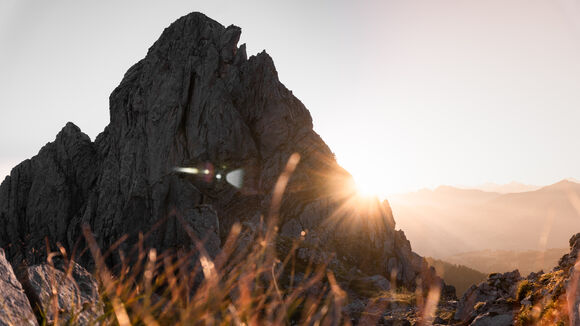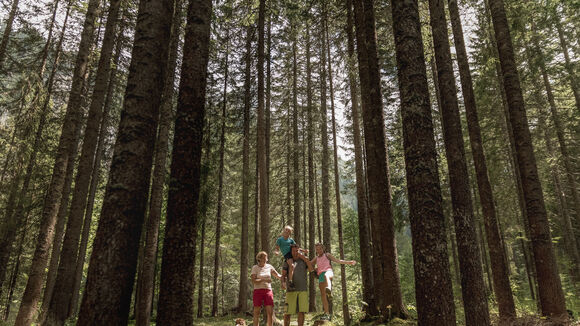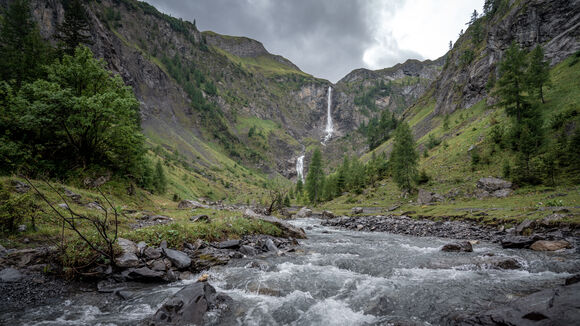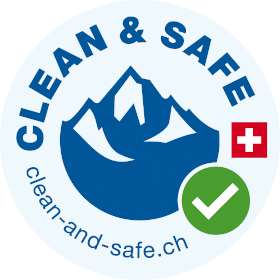Energy
The power of wood
“Sovereignty depends not on having a lot, but on needing little” (Niko Paech)
The three district heating plants heat almost 400 buildings with local wood.
The heat from the three district heating plants in Saanen, Schönried and Gsteig supplies most public buildings (schools, administration, etc.) and hotels, as well as some private houses. The wood for fuel comes from the nearby forests and from demolished buildings. In order to achieve the same level of heating in all these buildings, 4–4.5 million litres of heating oil would have to be burnt per year. In other words, CO2 emissions are reduced by 8,700 t!
We are proud of the pioneering work of a few private individuals in the municipality of Saanen who opted for sustainable energy as early as 1988.
Gstaad Saanenland Tourism obtains 100% of its electricity from renewable energy, mainly from Swiss hydropower.
In Dorfrütti outside Saanen (exit Saanen in the direction of Rougemont – visible from the train or car, but also on foot), you can discover the piles of wood and the two red-white-red chimneys. For a tour, please contact Rolf Schwenter 079 352 17 95. The district heating stations in Gsteig and Schönried still have spare capacity.
The power of water
Two hydroelectric power stations provide clean energy
Gstaad Saanenland Tourism obtains 100% of its electricity from renewable energy, mainly from Swiss hydropower. And hydroelectric power also plays an important role in other respects. Local hydroelectric power is also used for environmentally friendly electricity generation. The Sanetsch hydropower plant produces around 40 GWh of clean, renewable energy per year. This amount of electricity is sufficient to supply more than 8,000 households. In addition, the small hydroelectric power plant in Lauenen supplies around 1,000 more households. The Sanetsch power plant was proposed as an official construction project as early as 1920. However, political and social obstacles prevented the power plant from becoming a reality until 1959. Since 1994, the 8-person cable car from Gsteig to the Sanetsch reservoir has also been open to the public in the summer months. Visit the dam wall with the Sanetsch cable car or stroll along the Saane or the Louibach and observe the power of the water depending on the flow rate.

The power of the sun
In the destination of Gstaad, two different systems are used for sustainable energy production.
The sun is the basis of all life processes on earth. Every year, about 20,000 times the world's annual energy requirements reaches the earth's surface in the form of solar energy. By the end of 2022, it is expected that solar power fed into the electricity grid will provide a total of 5% of electricity across Switzerland. So there is still huge potential. There are various ways of using solar energy – in Saanenland, these are hot water heating and electricity generation from sunlight. Two local companies are leading the way and are happy to see more and more people turning to carbon-neutral electricity and heat generation.
Hot water production with solar energy
Local company Zmotec Solartechnick GmbH has specialised in solar thermal systems for water heating and backup heating since 1997. It has equipped more than 430 roofs with systems, each covering an area of about 20m2. The system, which works without pressure or frost protection, was developed in Saanenland and is also largely produced in Saanen.
Power production with solar power
Local company solarUp energie GmbH plans and builds photovoltaic systems to produce energy. To date, it has installed around 270 systems on various roofs, and 1,400 4-person households obtain their annual electricity from renewable energy. So far, they have covered an area of about 30,000 m2 with panels, which is equivalent to about five football fields. Another showcase for Swiss Made (3S Solar Solutions, Thun).
Interested?
If you walk from Gstaad towards Gruben or Gfell and reach a slightly elevated position, when you turn round you will be able to count the systems installed on village roofs. You can do the same in the other villages of our region – just look down into the valley from above! Here's hoping you will see more and more systems each year.










